Intel Z97 Motherboard Roundup with ASUS, Biostar, Gigabyte and MSI
MSI Z97 Gaming 7 Intel Z97 Motherboard
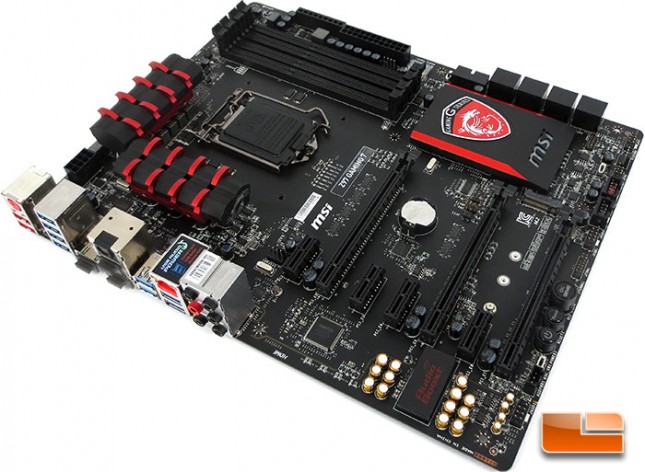
In addition to the GIGABYTE board on the previous page, we also have the MSI Z97 Gaming 7 on hand. The Z97 Gaming 7 is currently carrying a price tag for as little as $179.99. If I were basing my opinion on solely the best looking motherboard of the bunch, I think it would have to go to the MSI Z97 Gaming 7. I’ve been a fan of the blacked out look for years, the hints of red across the board really add to the overall look. Fortunately for the GIGABYTE and BIOSTAR boards, I’m not worried about looks when it comes down to my decision to by a board. If the board doesn’t have the performance and features that I’m looking for, then it will get scratched off of my short list without a hesitation.
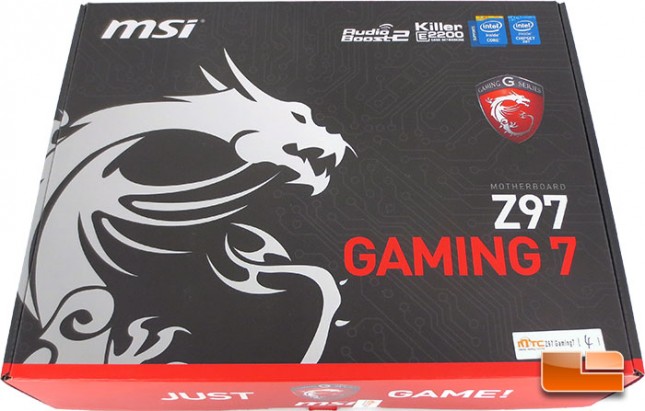
Fortunately the MSI Z97 Gaming 7 would have no issues staying on my short list. This particular motherboard is packed with the features that I would be looking for in a board. The Z97 Gaming 7 is packed with features like the Killer E2200 gaming network adapter, M.2 & SATA Express, XSplit Gamecaster, Military Class 4 components, OC Genie 4, Gaming Device port, MSI Gaming App, Click BIOS 4, NVIDIA SLI & AMD CrossFire, OC Essentials and Audio Boost 2.
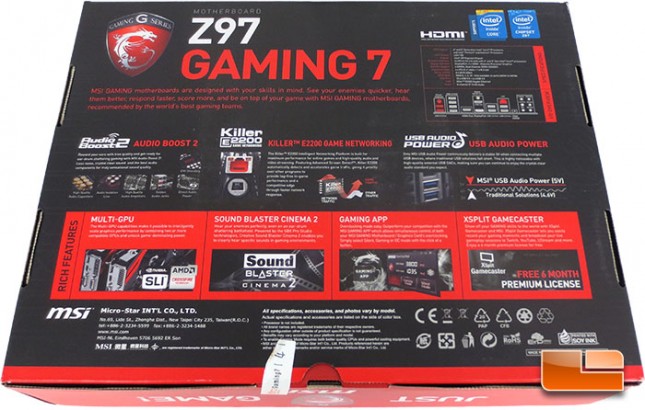
The back of the retail packaging for the MSI Z97 Gaming 7 has no shortage of text. Here MSI breaks down a handful of the key features that I mentioned above.
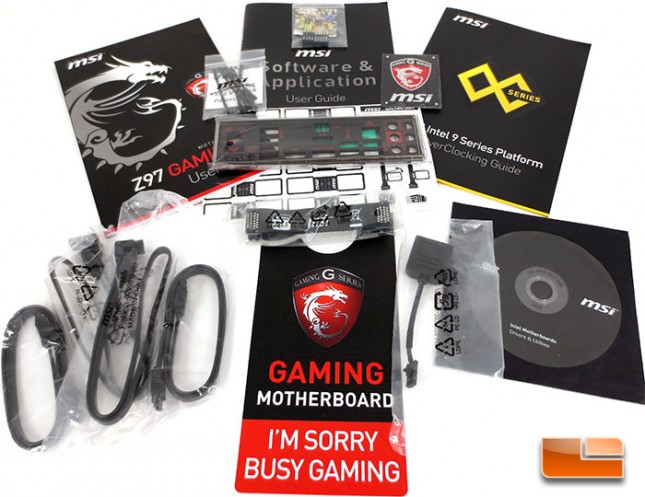
The bundle for the MSI Z97 Gaming 7 is the best of the three Z97 boards today, though all of them do include all the accessories that you’ll need to set your system up. The MSI Z97 Gaming 7 has the usual paper work, plus an overclocking guide, I/O shield, four SATA cables, V-Check point adapters, NVIDIA SLI bridge, driver disc, and the MSI case badge.
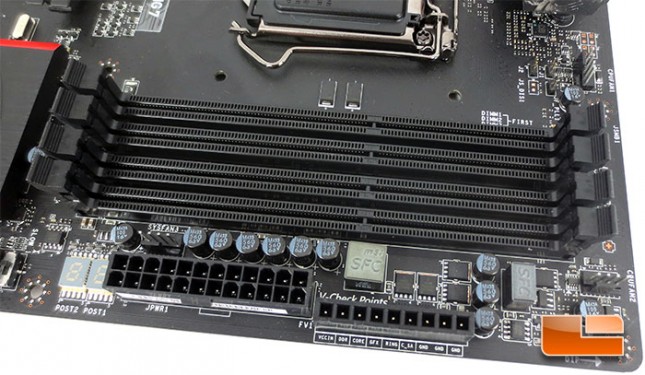
The MSI Z97 Gaming 7 has the usual four DIMM slots that will support dual channel memory at speeds up to 3300MHz and a maximum of 32GB. Just above the DIMM slots is a 4pin CPU fan header, while there is a second CPU fan header just below the DIMM slots. Much like the GIGABYTE Z97X-UD5H on the previous page, there is a series of V-Check points that can be used to check several of the voltages on the MSI Z97 Gaming 7, though unlike the GIGABYTE board, the MSI V-Check points are able to accept a plug that you can connect a probe to rather than a simple point to touch on. To the left of the 24pin motherboard power plug is a POST code Debug LED that comes in handy if the system is hanging on post.
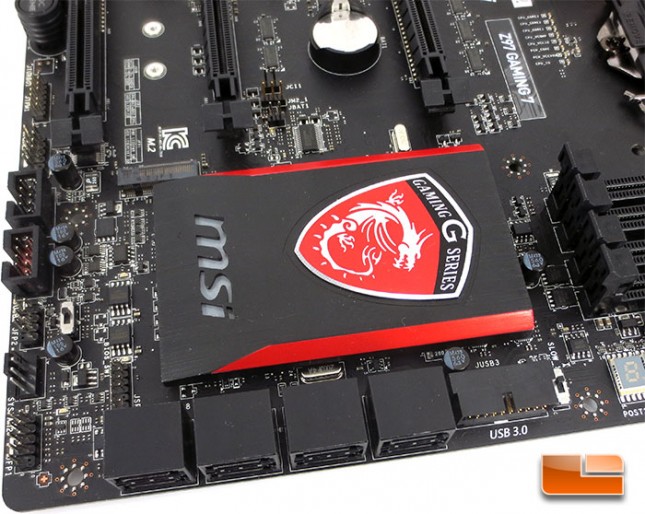
The MSI Z97 Gaming 7 does not have the SATA Express, instead the only feature eight SATA III 6Gbps ports as well as the M.2 port. The pair of SATA ports on the left are not part of the Intel Z97 chipset, instead they are running off of an ASMedia ASM1061 SATA III 6Gbps controller. The remaining six are native to the Intel Z97 chipset. To the right of the SATA ports is the Intel Z97 native internal SuperSpeed USB 3.0 header. Along the edge of the MSI Z97 Gaming 7 motherboard we can see the front panel pinout, a 4pin system fan header, a second front panel header, a pair of internal USB 2.0 headers, comm port header, and the TPM (Trusted Platform Module) header.
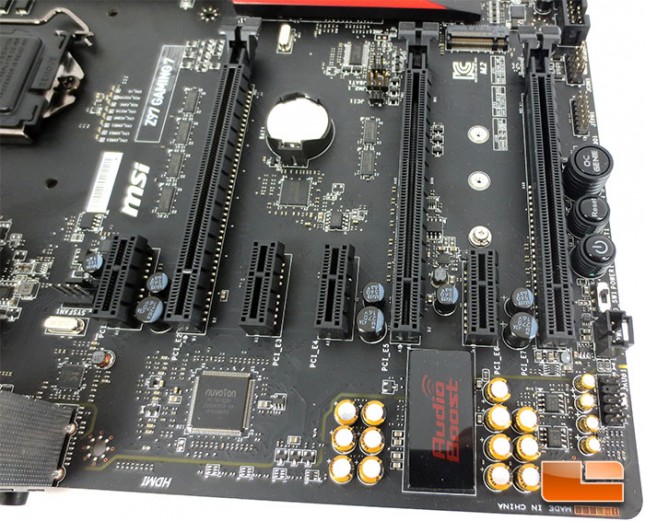
The PCIe x16 layout of the MSI Z97 Gaming 7 is pretty comparable to the Z97X-UD5H on the previous page. There is a total of three PCIe x16 slots that operate in a x8,x4,x4 configuration if all of them are populated. This configuration will support 2-way NVIDIA SLI or 3-way/2-way AMD CrossFire. If you’re only running two graphics cards, the PCIe x16 slots will run at x8,x8 or x16 if you’re running a single card. Unlike the Z97X-UD5H there are no legacy PCI slots, instead the Gaming 7 features four PCIe x1 slots. The MSI Z97 Gaming 7 features the Realtek ALC1150 high definition audio codec and is segregated from the rest of the PCB to prevent any electrical interference from the board.
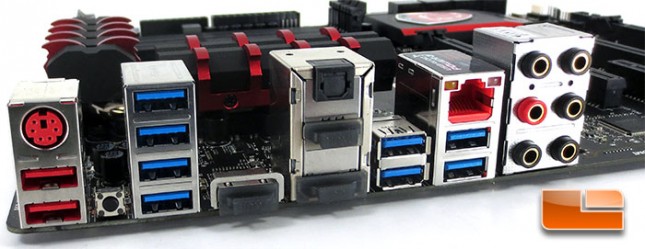
The MSI Z97 Gaming 7 I/O panel is stocked with USB connectivity with a grand total of 10 USB ports. Eight of the USB ports on the back panel are SuperSpeed USB 3.0 ports. MSI is using three different SuperSpeed USB 3.0 controllers on the Gaming 7, on the back panel there are two USB 3.0 ports from the Intel Z97 chipset, four ports from an ASMedia ASM1074 USB controller, and two USB 3.0 ports from an ASMedia ASM1042 controller. The remaining two USB ports are USB 2.0 ports that are native to the Intel Z97 chipset. There is also a single PS/2 port, CMOS reset button, a pair of HDMI ports, a DisplayPort, optical SPDIF out, six 3.5mm audio jacks. The RJ45 jack is a Gigabit Ethernet port that is controlled by a Qualcomm Atheros Killer E2205 controller.
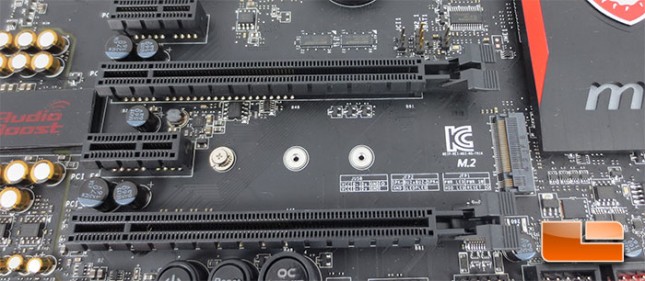
I’m not sure if I like the placement of the M.2 port on the MSI Z97 Gaming 7 motherboard, MSI placed it between the 2nd and 3rd PCIe x16 slots. If you’re running a pair of graphics cards in SLI or CrossFire the M.2 port will be covered if you need to remove the M.2 drive. Granted, removing a video card isn’t a big issue if you build your own system, just one more step.
